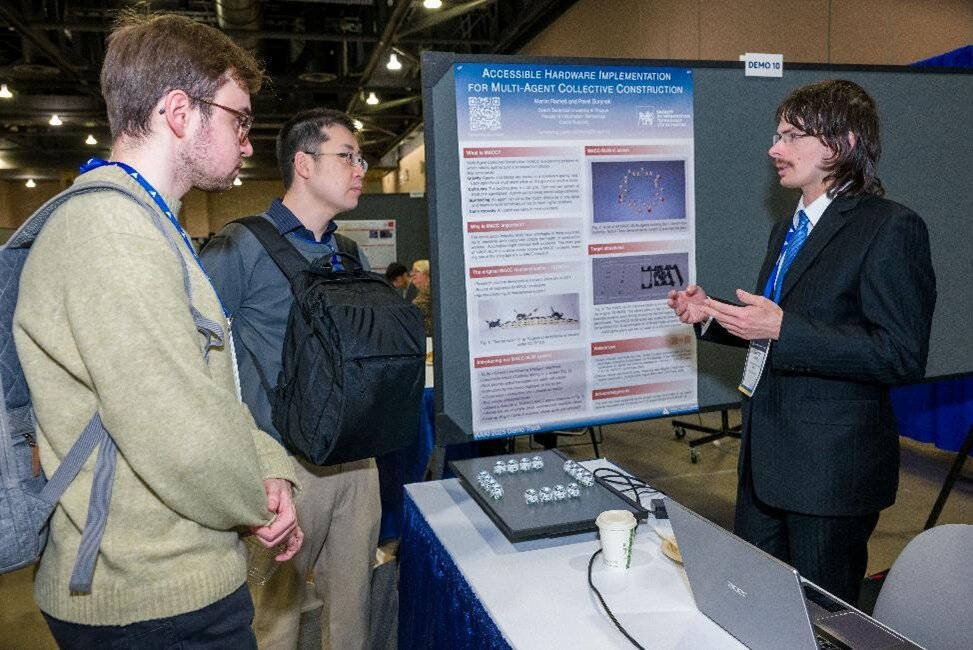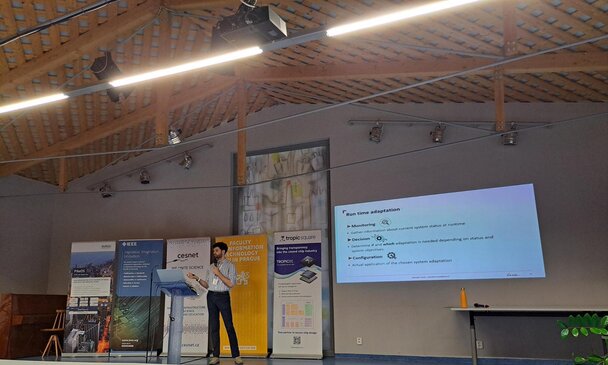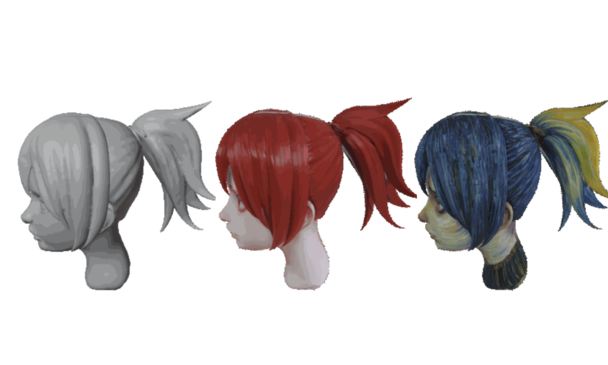
Ing. Martin Rameš, a PhD student at the Faculty of Information Technology at the Czech Technical University (FIT CTU), under the supervision of Prof. RNDr. Pavel Surýnek, Ph.D., attended the prestigious AAAI 2025 conference (AAAI Conference on Artificial Intelligence) in Philadelphia, where he presented his innovative paper, "Accessible Hardware Implementation for Multi-Agent Collective Construction". Among other things, Martin had an unusual task awaiting him – safely transporting robots from RoboAgeLab across the ocean.
Robots (specifically Ozobots) are small, sophisticated robots that play a key role in multi-agent systems research at the Faculty of Information Technology, Czech Technical University (FIT CTU). These compact robots, which fit into the palm of your hand, are equipped with sensors that enable line tracking, color code recognition, and obstacle distance monitoring. Based on inputs from these sensors, Ozobots can perform complex movements, change speed and direction, and carry out specific actions, such as navigating a simulated construction site.
"I took a set of 18 Ozobots to America. To keep them in sight at all times, I packed them all into a small carry-on bag, which I kept with me throughout the trip. On the other hand, the monitor, on which the robots were moving, had to be placed in the checked luggage," says Martin.
As part of their research, Ozobots are used in RoboAgeLab to simulate and analyze the behavior of multi-agent collective construction systems—where a simple computer simulation would not be sufficient.
Martin’s article, "Accessible Hardware Implementation for Multi-Agent Collective Construction," presents an innovative approach to the hardware implementation of multi-agent collective construction, where robots collaborate to build complex structures from blocks. This new semi-simulated design combines real robots with virtual blocks displayed on a screen, over which the robots move. Thanks to this approach, it was possible to use commercially available robots and significantly reduce the size of the entire system, enabling the construction of much larger structures in laboratory conditions.
“Ozobots are an invaluable tool for our research activities, supporting innovations and advancements in robotics and artificial intelligence. At the demonstration at the AAAI 2025 conference, the robots captured the attention of the experts present, giving me the opportunity to showcase my innovative research,” adds Martin.
The robots from RoboAgeLab demonstrated their full capabilities in Philadelphia. Martin showed how the robots can cooperate, using color signals and navigation lines on the screen to simulate building complex structures. This new system is about six times smaller than the original hardware version of the project intended for simulations. As a result, scientists will be able to more easily and flexibly test construction plans on large groups of robots, even in smaller laboratories.


